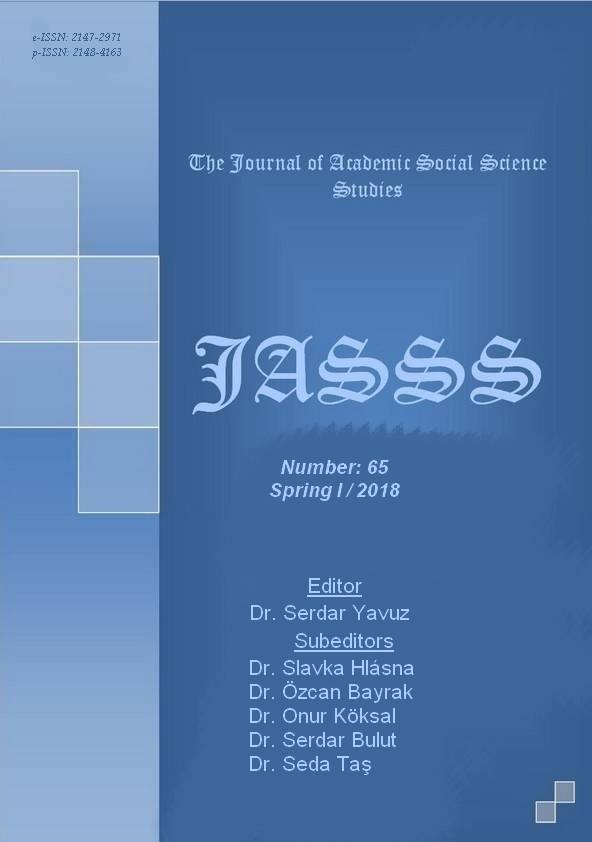Author :
Abstract
Zana Briski’nin ve Ross Kaufman’ın yönettiği 2004 tarihli belgesel film Born into Brothels: Calcutta’s Red Light Kids, Hindistan’ın Kalküta kentindeki genelev mahallesinin (Sonagachi) çocuklarını konu edinmektedir. Filmde yoksulluk, fuhuş, toplumsal eşitsizlik, toplumsal hareketliliğin zayıflığı gibi birçok tema yer almaktadır. Bu çalışmada Born into Brothels: Calcutta’s Red Light Kids’in genelev gettosu ile ilgili yansıttıklarının sosyolojik tartışmalar etrafında analiz edilmesi amaçlanmaktadır. Bu doğrultuda, önce ataerkil sistemde fuhşun meşrulaştırılması üzerinde durulmuş; ardından genelev mahallesindeki çocukların dezavantajlı konumlarının nedenleri ifade edilmiştir. Sonagachi’de doğan çocuklar küçük yaşlardan itibaren çalıştırılmakta, fuhuş pazarında kendilerine düşen rolü yerine getirmeye zorlanmaktadırlar. Eğitim imkânlarından mahrum kalmaları toplumsal hareketliliğe olanak vermemektedir. Sonagachi’de doğmak kelimenin tam anlamıyla “damgalanmak” anlamına gelmektedir. Film yoksulluğun, ötekilik, damgalanma, marjinal sektör olgularıyla olan bağını ortaya koyması açısından önem arz etmektedir. Sonagachi’nin çocukları, toplumsal eşitsizlikten çok fazla pay almaktadır; aileleri tarafından bir “sigorta” olarak görülmektedir. Çocukların marjinal sektörde çalışmaktan kurtulması için ne aileler ne de devlet bir çaba harcamaktadır. Filmin sosyolojik olarak tartışılması, özellikle yoksulluğun miras bırakılması konusuna ışık tutabilme imkânı tanımaktadır. Bu bağlamda, çalışmada öncelikle Sonagachi’nin kadınlarının dünyasından bahsedilmiştir. Ardından üç kategori altında çocukların uğradığı çocukların uğradığı yoksulluk ve damgalanmaya değinilmiştir. Ailenin çocukları bir sigorta olarak görmesi, çocukların hayatında değişimden uzak hale getirmektedir. Eğitim imkânlarından yoksun olma toplumsal hareketliliğe fırsat tanımamaktadır. Damgalanmanın çeşitli biçimlerine maruz kalan çocuklar toplumsal dışlanma ile karşılaşmaktadır.
Keywords
Abstract
Born into Brothels: Calcutta's Red Light Kids (2004), directed by Zana Briski and Ross Kaufman, is a documantary movie subjects children of “red light district” in the city of Kolkata (India). There are many themes in the movie such as the poverty, prostitution, social inequality and the the weakness of the social mobility. In this study, it is aimed to analyze what film reflects around the sociological debates. In this direction, first it is focused on the patriarchal system’s legitimation of prostitution, then expressed the causes of children’s disadvantaged status in the red light district. Children born in Sonagachi are worked from an early age, they are forced to fulfill their role in the prostitution market. Their lack of educational opportunities does not allow social mobility. Born in Sonagachi literally means “to be stigmatized”. Film is important in terms of revealing that poverty’s bond with “otherness”, “stigma” and “marginal sector”. Children of Calcutta takes too much share from social inequality; they are seen as an “insurance” by their families. Neither families nor the state make an effort to get rid of the children working in the marginal sector. Sociological discussions of Born into Brothels: Calcutta's Red Light Kids is helpful to crytallize the legacy of the poverty. In this context, the study first mentions the world of Sonagachi's women. Then, under the three categories, children's poverty and stigmatization is addressed. The fact that the family defines their children as an insurance makes the future of the children distant from any change. Lack of educational opportunities does not allow social mobility at all. Children who are exposed to various forms of stigmatization face social exclusion.
